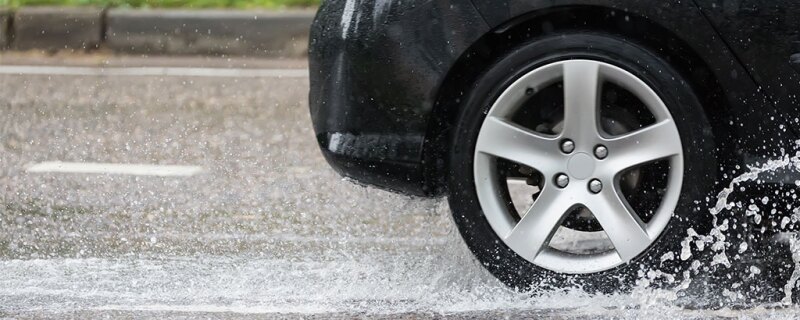With winter snow melting and spring rains upon us, businesses with fleets of vehicles must navigate potential challenges on the roads. As the season changes, drivers may be facing flooded streets and slippery conditions. And it’s not just water that’s a problem — rain can mix with oil and other debris, making wet roads even slicker than expected.
To ensure the safety of your business drivers during these conditions, adopt the following tips:
Choose an inside lane. Stick to the inside lanes if pooling water is evident. Roads are generally constructed so water drains to the side.
Avoid flooded streets. Never drive through flowing or standing water unless you can confidently judge its depth. Choose an alternate route if you can. Deep water may flood your engine or even carry you off the roadway.
Turn on your headlights. Remember that headlights aren’t just to help you see, they help make your vehicle more visible to other drivers.
Keep your distance. You need more time to brake when driving on wet roads. Give yourself time to react by keeping at least two or three car lengths from the vehicle in front of you.
Slow down. If you’re driving too fast in wet conditions, your car can lose traction and start to hydroplane. When you drive at a slower pace, you allow more of your tire tread to make contact with the road.
Know how to recover if you’re hydroplaning. Hydroplaning occurs when the water in front of your car builds up faster than your tires can push it out of the way. If that happens, your car can rise up on a thin layer of water and lose contact with the road. If you find yourself hydroplaning, stay calm. Don’t brake or turn suddenly or you could throw your car into a skid. Ease off the gas until the car slows. If you have ABS ( since September 2000 this is required all new cars), brake firmly and slowly turn your car in the direction you want it to go.
Pull over if you can’t see. You may know your local roads like the back of your hand, but if rain is coming down so hard that you can’t see at a safe distance, pull off the road, turn your hazard lights on, and wait it out.
Maintain your tires. As your tires age, the tread wears out and they lose their ability to channel water and grip the road. Keep tires on your company vehicles properly inflated and inspect them regularly.
Driving on wet roads poses a challenge, but if implement safety protocols that clearly outline how to mitigate these conditions, your employees will feel more confident and make better decisions on the roadways.






